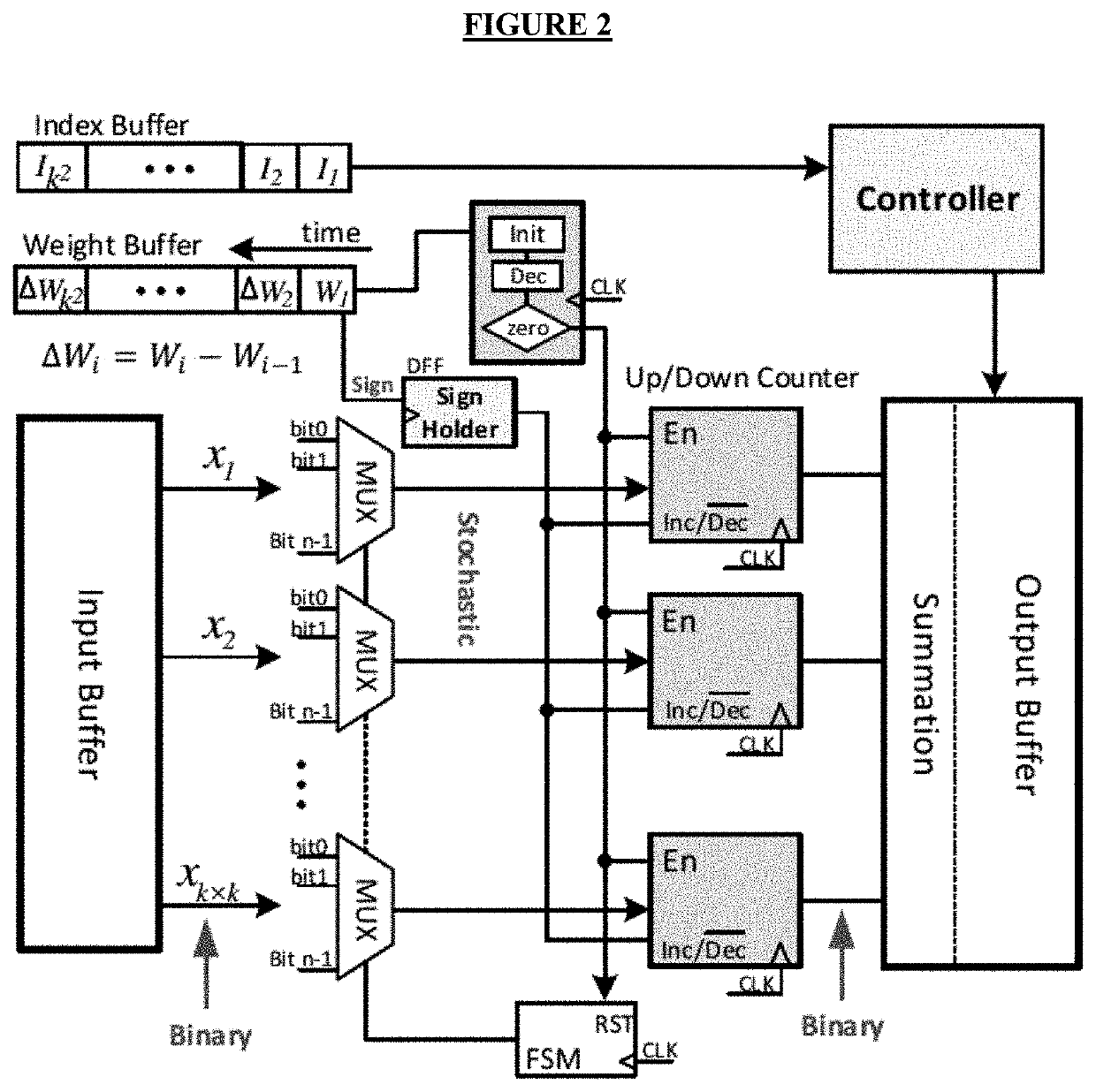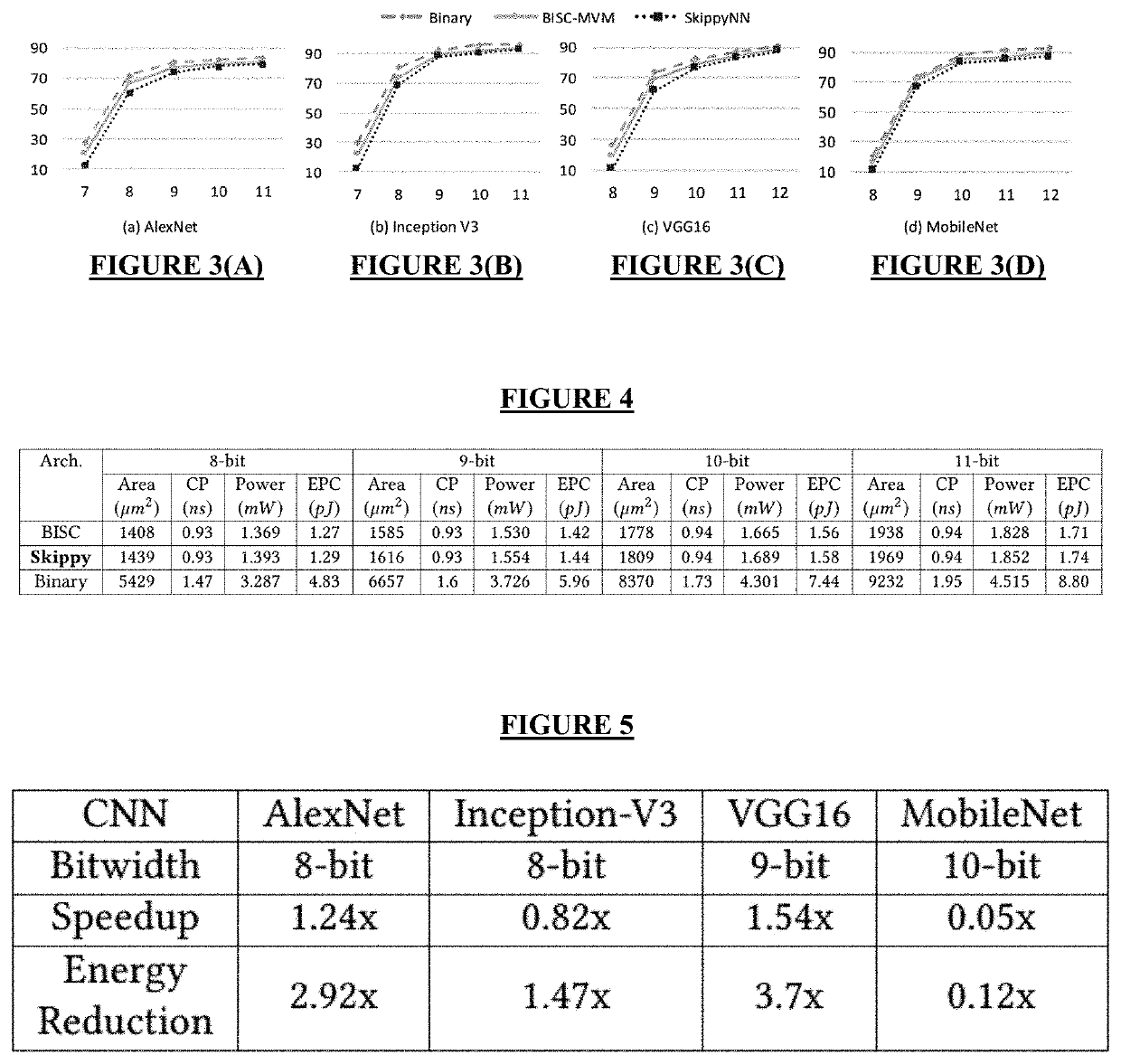Embedded stochastic-computing accelerator architecture and method for convolutional neural networks
a convolutional neural network and accelerator technology, applied in the field of embedded stochasticcomputing accelerator architecture and method for convolutional neural network, can solve the problems of limited computational resources and inadequate power budgets, low accuracy, sc-based operations, etc., and achieve faster multiplication of bit-streams, improved energy consumption, and reduced computation time
- Summary
- Abstract
- Description
- Claims
- Application Information
AI Technical Summary
Benefits of technology
Problems solved by technology
Method used
Image
Examples
Embodiment Construction
[0037]Stochastic multiplication of random bit-streams often takes a very long processing time (proportional to the length of the bit-streams) to produce acceptable results. A typical CNN is composed of a large number of layers where the convolutional layers constitute the largest portion of the computation load and hardware cost. Due to the large number of multiplications in each layer, developing a low-cost design for these heavy operations is desirable. The BISC-MVM method disclosed by Sim and Lee significantly reduces the number of clock cycles taken in the stochastic multiplication and the total computational time of convolutions, but further improvement to mitigate the computational load of multiplications is still needed.
[0038]In convolutional layers known in the art, each filter consists of both positive and negative weights. The conventional approach to handle signed operations in the SC-based designs is by using the bipolar SC domain. The range of numbers is extended from [...
PUM
 Login to View More
Login to View More Abstract
Description
Claims
Application Information
 Login to View More
Login to View More - R&D
- Intellectual Property
- Life Sciences
- Materials
- Tech Scout
- Unparalleled Data Quality
- Higher Quality Content
- 60% Fewer Hallucinations
Browse by: Latest US Patents, China's latest patents, Technical Efficacy Thesaurus, Application Domain, Technology Topic, Popular Technical Reports.
© 2025 PatSnap. All rights reserved.Legal|Privacy policy|Modern Slavery Act Transparency Statement|Sitemap|About US| Contact US: help@patsnap.com



